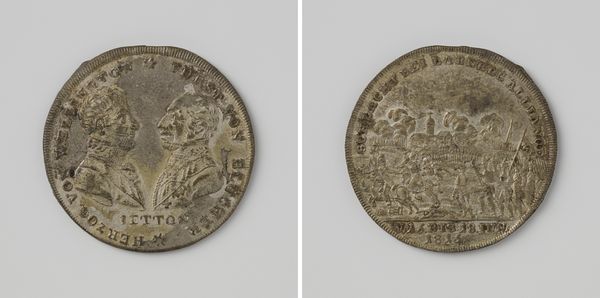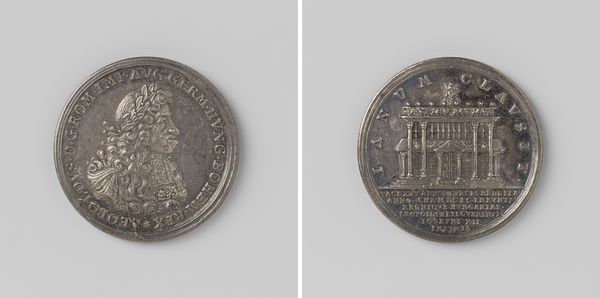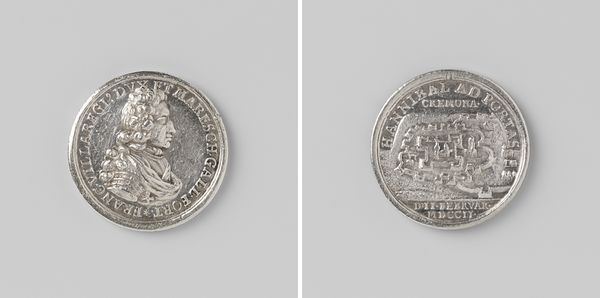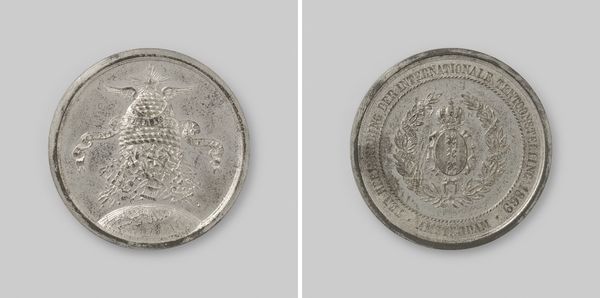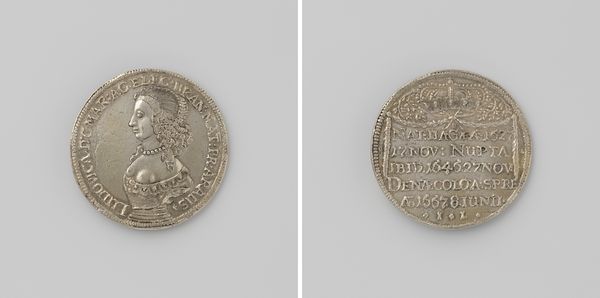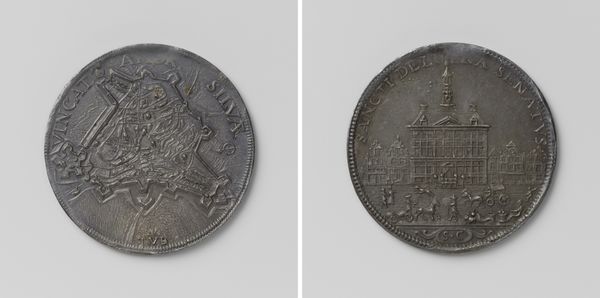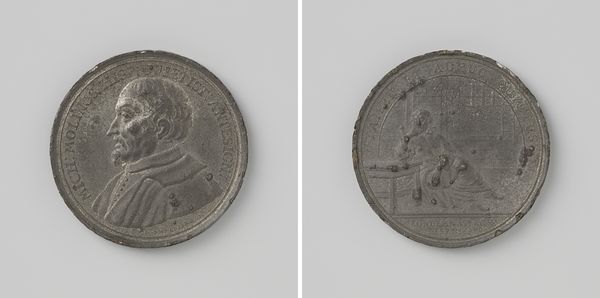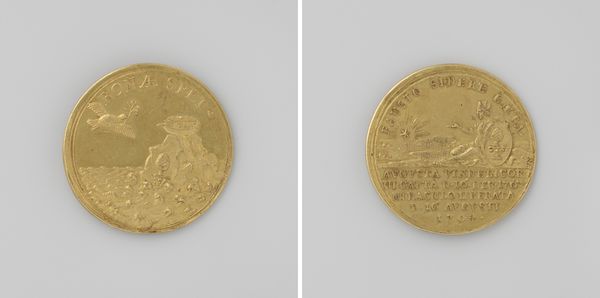
Verdrag van Karlowitz tussen de keizer, Polen, Rusland, Venetië en Turkije 1699
0:00
0:00
relief, bronze, sculpture
#
portrait
#
medal
#
baroque
#
relief
#
bronze
#
sculpture
#
history-painting
Dimensions: diameter 3.1 cm, weight 10.95 gr
Copyright: Rijks Museum: Open Domain
Editor: This is a bronze relief, a medal, made in 1699 by Christian Wermuth, commemorating the Treaty of Karlowitz between the Holy Roman Emperor, Poland, Russia, Venice, and Turkey. The imagery feels incredibly formal, even cold. How do you interpret this work, considering its historical context? Curator: This medal, like so many historical artifacts, speaks volumes through its carefully chosen symbols. Consider the portrait of the emperor on one side – not just a likeness, but an assertion of power and legitimacy. His gaze, his hairstyle, even the inscription framing him, all contribute to a carefully constructed image. The other side depicts the building where the treaty was signed. What message is conveyed by placing these two images on the same object? Editor: It's like saying the emperor's authority is intertwined with this moment of peace, solidifying his place in history. But is that building specifically chosen? What about that imagery matters? Curator: Precisely. The building itself might represent order, diplomacy, and the architectural embodiment of civilization overcoming chaos. Think about the weight such images carried for people at the time, who were steeped in visual language that we may only grasp academically now. The very act of minting and distributing such medals imprints these ideas within cultural memory. And notice, this wasn't just about peace. It was about solidifying the emperor’s image. What does that tell us about power at that moment in time? Editor: So, the medal isn’t just a record but a form of propaganda? A way of shaping how people remember this treaty and the emperor involved? Curator: Indeed. It prompts us to think critically about whose stories get told, and how symbols are mobilized to reinforce specific narratives, solidifying ideas about peace and control of power. Editor: That makes the medal far more complex than I initially thought. Seeing the symbols with intention really makes this object tell a deeper story! Curator: It does. When we begin to look beneath the surface, historical memory unfolds.
Comments
No comments
Be the first to comment and join the conversation on the ultimate creative platform.
